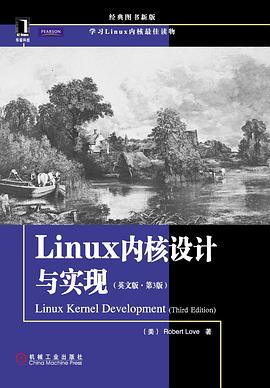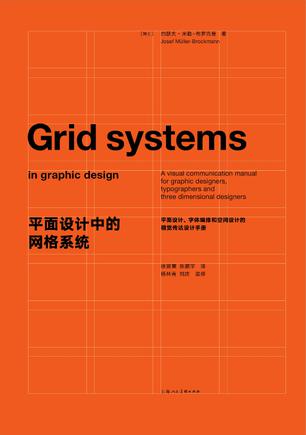Linux内核设计与实现
内容简介
本书基于Linux 2.6内核介绍了Linux内核的设计与实现,涵盖了从核心内核系统的应用到内核设计与实现等各
方面内容,主要内容包括:进程管理、调度、时间管理和定时器、系统调用接口、内存寻址、内存管理、页缓
存、VFS、内核同步、可移植性、调试技术等。此外,本书还讨论了Linux 2.6颇具特色的内容,包括CFS调度
程序、抢占式内核、块I/O层以及I/O调度程序。
本书详细描述了Linux内核的主要子系统和特点,包括其设计、实现和接口,既介绍理论也讨论具体应用,填
补了Linux内核理论和实践细节之间的鸿沟,能够带领读者快速走进Linux内核世界,真正开发内核代码。
如果你是一名Linux内核爱好者,本书的内容可以帮助你大显身手。如果你是一名普通程序员,本书的内容将
会拓宽你的编程思路。如果你初次接触Linux内核,本书则可以帮助你对内核各个核心子系统有一个整体把握
。
本版新增内容
·增加一章专门描述内核数据结构
·详细描述中断处理程序
·扩充虚拟内存和内存分配的内容
·调试Linux内核的技巧
·内核同步和锁机制的深度描述
·提交内核补丁以及参与Linux内核社区的建设性建议
......(更多)
作者简介
Robert Love 是开源社区的名人,很早就开始使用Linux。目前他是Google公司高级软件工程师,是开发
Android移动平台内核的团队成员。他曾受聘于Novell公司,作为Linux Desktop主架构师。他还曾受聘于
MontaVista软件公司(后改名为Ximian公司),作为内核工程师。他的内核项目包括抢占式内核、进程调度程
序、内核事件层、inotify、VM增强以及设备驱动程序。他是《Linux Journal》杂志的特邀编辑。
......(更多)
目录
1 Introduction to the Linux Kernel 1
History of Unix 1
Along Came Linus: Introduction to Linux 3
Overview of Operating Systems and Kernels 4
Linux Versus Classic Unix Kernels 6
Linux Kernel Versions 8
The Linux Kernel Development Community 10
Before We Begin 10
2 Getting Started with the Kernel 11
Obtaining the Kernel Source 11
Using Git 11
Installing the Kernel Source 12
Using Patches 12
The Kernel Source Tree 12
Building the Kernel 13
Configuring the Kernel 14
Minimizing Build Noise 15
Spawning Multiple Build Jobs 16
Installing the New Kernel 16
A Beast of a Different Nature 16
No libc or Standard Headers 17
GNU C 18
Inline Functions 18
Inline Assembly 19
Branch Annotation 19
No Memory Protection 20
No (Easy) Use of Floating Point 20
Small, Fixed-Size Stack 20
Synchronization and Concurrency 21
Importance of Portability 21
Conclusion 21
3 Process Management 23
The Process 23
Process Descriptor and the Task Structure 24
Allocating the Process Descriptor 25
Storing the Process Descriptor 26
Process State 27
Manipulating the Current Process State 29
Process Context 29
The Process Family Tree 29
Process Creation 31
Copy-on-Write 31
Forking 32
vfork() 33
The Linux Implementation of Threads 33
Creating Threads 34
Kernel Threads 35
Process Termination 36
Removing the Process Descriptor 37
The Dilemma of the Parentless Task 38
Conclusion 40
4 Process Scheduling 41
Multitasking 41
Linux’s Process Scheduler 42
Policy 43
I/O-Bound Versus Processor-Bound Processes 43
Process Priority 44
Timeslice 45
The Scheduling Policy in Action 45
The Linux Scheduling Algorithm 46
Scheduler Classes 46
Process Scheduling in Unix Systems 47
Fair Scheduling 48
The Linux Scheduling Implementation 50
Time Accounting 50
The Scheduler Entity Structure 50
The Virtual Runtime 51
Process Selection 52
Picking the Next Task 53
Adding Processes to the Tree 54
Removing Processes from the Tree 56
The Scheduler Entry Point 57
Sleeping and Waking Up 58
Wait Queues 58
Waking Up 61
Preemption and Context Switching 62
User Preemption 62
Kernel Preemption 63
Real-Time Scheduling Policies 64
Scheduler-Related System Calls 65
Scheduling Policy and Priority-Related
System Calls 66
Processor Affinity System Calls 66
Yielding Processor Time 66
Conclusion 67
5 System Calls 69
Communicating with the Kernel 69
APIs, POSIX, and the C Library 70
Syscalls 71
System Call Numbers 72
System Call Performance 72
System Call Handler 73
Denoting the Correct System Call 73
Parameter Passing 74
System Call Implementation 74
Implementing System Calls 74
Verifying the Parameters 75
System Call Context 78
Final Steps in Binding a System Call 79
Accessing the System Call from User-Space 81
Why Not to Implement a System Call 82
Conclusion 83
6 Kernel Data Structures 85
Linked Lists 85
Singly and Doubly Linked Lists 85
Circular Linked Lists 86
Moving Through a Linked List 87
The Linux Kernel’s Implementation 88
The Linked List Structure 88
Defining a Linked List 89
List Heads 90
Manipulating Linked Lists 90
Adding a Node to a Linked List 90
Deleting a Node from a Linked List 91
Moving and Splicing Linked List Nodes 92
Traversing Linked Lists 93
The Basic Approach 93
The Usable Approach 93
Iterating Through a List Backward 94
Iterating While Removing 95
Other Linked List Methods 96
Queues 96
kfifo 97
Creating a Queue 97
Enqueuing Data 98
Dequeuing Data 98
Obtaining the Size of a Queue 98
Resetting and Destroying the Queue 99
Example Queue Usage 99
Maps 100
Initializing an idr 101
Allocating a New UID 101
Looking Up a UID 102
Removing a UID 103
Destroying an idr 103
Binary Trees 103
Binary Search Trees 104
Self-Balancing Binary Search Trees 105
Red-Black Trees 105
rbtrees 106
What Data Structure to Use, When 108
Algorithmic Complexity 109
Algorithms 109
Big-O Notation 109
Big Theta Notation 109
Time Complexity 110
Conclusion 111
7 Interrupts and Interrupt Handlers 113
Interrupts 113
Interrupt Handlers 114
Top Halves Versus Bottom Halves 115
Registering an Interrupt Handler 116
Interrupt Handler Flags 116
An Interrupt Example 117
Freeing an Interrupt Handler 118
Writing an Interrupt Handler 118
Shared Handlers 119
A Real-Life Interrupt Handler 120
Interrupt Context 122
Implementing Interrupt Handlers 123
/proc/interrupts 126
Interrupt Control 127
Disabling and Enabling Interrupts 127
Disabling a Specific Interrupt Line 129
Status of the Interrupt System 130
Conclusion 131
8 Bottom Halves and Deferring Work 133
Bottom Halves 134
Why Bottom Halves? 134
A World of Bottom Halves 135
The Original “Bottom Half” 135
Task Queues 135
Softirqs and Tasklets 136
Dispelling the Confusion 137
Softirqs 137
Implementing Softirqs 137
The Softirq Handler 138
Executing Softirqs 138
Using Softirqs 140
Assigning an Index 140
Registering Your Handler 141
Raising Your Softirq 141
Tasklets 142
Implementing Tasklets 142
The Tasklet Structure 142
Scheduling Tasklets 143
Using Tasklets 144
Declaring Your Tasklet 144
Writing Your Tasklet Handler 145
Scheduling Your Tasklet 145
ksoftirqd 146
The Old BH Mechanism 148
Work Queues 149
Implementing Work Queues 149
Data Structures Representing the Threads 149
Data Structures Representing the Work 150
Work Queue Implementation Summary 152
Using Work Queues 153
Creating Work 153
Your Work Queue Handler 153
Scheduling Work 153
Flushing Work 154
Creating New Work Queues 154
The Old Task Queue Mechanism 155
Which Bottom Half Should I Use? 156
Locking Between the Bottom Halves 157
Disabling Bottom Halves 157
Conclusion 159
9 An Introduction to Kernel Synchronization 161
Critical Regions and Race Conditions 162
Why Do We Need Protection? 162
The Single Variable 163
Locking 165
Causes of Concurrency 167
Knowing What to Protect 168
Deadlocks 169
Contention and Scalability 171
Conclusion 172
10 Kernel Synchronization Methods 175
Atomic Operations 175
Atomic Integer Operations 176
64-Bit Atomic Operations 180
Atomic Bitwise Operations 181
Spin Locks 183
Spin Lock Methods 184
Other Spin Lock Methods 186
Spin Locks and Bottom Halves 187
Reader-Writer Spin Locks 188
Semaphores 190
Counting and Binary Semaphores 191
Creating and Initializing Semaphores 192
Using Semaphores 193
Reader-Writer Semaphores 194
Mutexes 195
Semaphores Versus Mutexes 197
Spin Locks Versus Mutexes 197
Completion Variables 197
BKL: The Big Kernel Lock 198
Sequential Locks 200
Preemption Disabling 201
Ordering and Barriers 203
Conclusion 206
11 Timers and Time Management 207
Kernel Notion of Time 208
The Tick Rate: HZ 208
The Ideal HZ Value 210
Advantages with a Larger HZ 210
Disadvantages with a Larger HZ 211
Jiffies 212
Internal Representation of Jiffies 213
Jiffies Wraparound 214
User-Space and HZ 216
Hardware Clocks and Timers 216
Real-Time Clock 217
System Timer 217
The Timer Interrupt Handler 217
The Time of Day 220
Timers 222
Using Timers 222
Timer Race Conditions 224
Timer Implementation 224
Delaying Execution 225
Busy Looping 225
Small Delays 226
schedule_timeout() 227
schedule_timeout() Implementation 228
Sleeping on a Wait Queue, with a Timeout 229
Conclusion 230
12 Memory Management 231
Pages 231
Zones 233
Getting Pages 235
Getting Zeroed Pages 236
Freeing Pages 237
kmalloc() 238
gfp_mask Flags 238
Action Modifiers 239
Zone Modifiers 240
Type Flags 241
kfree() 243
vmalloc() 244
Slab Layer 245
Design of the Slab Layer 246
Slab Allocator Interface 249
Allocating from the Cache 250
Example of Using the Slab Allocator 251
Statically Allocating on the Stack 252
Single-Page Kernel Stacks 252
Playing Fair on the Stack 253
High Memory Mappings 253
Permanent Mappings 254
Temporary Mappings 254
Per-CPU Allocations 255
The New percpu Interface 256
Per-CPU Data at Compile-Time 256
Per-CPU Data at Runtime 257
Reasons for Using Per-CPU Data 258
Picking an Allocation Method 259
Conclusion 260
13 The Virtual Filesystem 261
Common Filesystem Interface 261
Filesystem Abstraction Layer 262
Unix Filesystems 263
VFS Objects and Their Data Structures 265
The Superblock Object 266
Superblock Operations 267
The Inode Object 270
Inode Operations 271
The Dentry Object 275
Dentry State 276
The Dentry Cache 276
Dentry Operations 278
The File Object 279
File Operations 280
Data Structures Associated with Filesystems 285
Data Structures Associated with a Process 286
Conclusion 288
14 The Block I/O Layer 289
Anatomy of a Block Device 290
Buffers and Buffer Heads 291
The bio Structure 294
I/O vectors 295
The Old Versus the New 296
Request Queues 297
I/O Schedulers 297
The Job of an I/O Scheduler 298
The Linus Elevator 299
The Deadline I/O Scheduler 300
The Anticipatory I/O Scheduler 302
The Complete Fair Queuing I/O Scheduler 303
The Noop I/O Scheduler 303
I/O Scheduler Selection 304
Conclusion 304
15 The Process Address Space 305
Address Spaces 305
The Memory Descriptor 306
Allocating a Memory Descriptor 308
Destroying a Memory Descriptor 309
The mm_struct and Kernel Threads 309
Virtual Memory Areas 309
VMA Flags 311
VMA Operations 312
Lists and Trees of Memory Areas 313
Memory Areas in Real Life 314
Manipulating Memory Areas 315
find_vma() 316
find_vma_prev() 317
find_vma_intersection() 317
mmap() and do_mmap(): Creating an
Address Interval 318
munmap() and do_munmap(): Removing an
Address Interval 320
Page Tables 320
Conclusion 322
16 The Page Cache and Page Writeback 323
Approaches to Caching 323
Write Caching 324
Cache Eviction 324
Least Recently Used 325
The Two-List Strategy 325
The Linux Page Cache 326
The address_space Object 326
address_space Operations 328
Radix Tree 330
The Old Page Hash Table 330
The Buffer Cache 330
The Flusher Threads 331
Laptop Mode 333
History: bdflush, kupdated, and pdflush 333
Avoiding Congestion with Multiple Threads 334
Conclusion 335
17 Devices and Modules 337
Device Types 337
Modules 338
Hello, World! 338
Building Modules 340
Living in the Source Tree 340
Living Externally 342
Installing Modules 342
Generating Module Dependencies 342
Loading Modules 343
Managing Configuration Options 344
Module Parameters 346
Exported Symbols 348
The Device Model 348
Kobjects 349
Ktypes 350
Ksets 351
Interrelation of Kobjects, Ktypes, and Ksets 351
Managing and Manipulating Kobjects 352
Reference Counts 353
Incrementing and Decrementing
Reference Counts 354
Krefs 354
sysfs 355
Adding and Removing kobjects from sysfs 357
Adding Files to sysfs 358
Default Attributes 358
Creating New Attributes 359
Destroying Attributes 360
sysfs Conventions 360
The Kernel Events Layer 361
Conclusion 362
18 Debugging 363
Getting Started 363
Bugs in the Kernel 364
Debugging by Printing 364
Robustness 365
Loglevels 365
The Log Buffer 366
syslogd and klogd 367
Transposing printf() and printk() 367
Oops 367
ksymoops 369
kallsyms 369
Kernel Debugging Options 370
Asserting Bugs and Dumping Information 370
Magic SysRq Key 371
The Saga of a Kernel Debugger 372
gdb 372
kgdb 373
Poking and Probing the System 373
Using UID as a Conditional 373
Using Condition Variables 374
Using Statistics 374
Rate and Occurrence Limiting Your Debugging 375
Binary Searching to Find the Culprit Change 376
Binary Searching with Git 376
When All Else Fails: The Community 377
Conclusion 378
19 Portability 379
Portable Operating Systems 379
History of Portability in Linux 380
Word Size and Data Types 381
Opaque Types 384
Special Types 384
Explicitly Sized Types 385
Signedness of Chars 386
Data Alignment 386
Avoiding Alignment Issues 387
Alignment of Nonstandard Types 387
Structure Padding 387
Byte Order 389
Time 391
Page Size 391
Processor Ordering 392
SMP, Kernel Preemption, and High Memory 393
Conclusion 393
20 Patches, Hacking, and the Community 395
The Community 395
Linux Coding Style 396
Indention 396
Switch Statements 396
Spacing 397
Braces 398
Line Length 399
Naming 400
Functions 400
Comments 400
Typedefs 401
Use Existing Routines 402
Minimize ifdefs in the Source 402
Structure Initializers 402
Fixing Up Code Ex Post Facto 403
Chain of Command 403
Submitting Bug Reports 403
Patches 404
Generating Patches 404
Generating Patches with Git 405
Submitting Patches 406
Conclusion 406
Bibliography 407
Index 411
......(更多)
读书文摘
操作系统包括内核、设备驱动程序、启动引导程序、命令行shell或者其他种类的用户界面、基本的文件管理工具和系统工具。 内核由负责响应中断的中断响应程序,负责管理多个进程从而分享处理器时间的调度程序,负责管理进程地址空间的内存管理程序,网络、进程间通信等系统服务程序。
......(更多)






